How to Run a File as an Administrator
Windows runs programs in user mode by default. If you want to run programs in administrative mode, you will need to specify that explicitly in Windows 10. Running programs in Windows 10 as an administrator is easy. In this article, we discuss a few ways to run programs in administrative mode in Windows 10. You may use the method which is convenient for you.
Each method mentioned below will have its own advantages and disadvantages depending upon the situation you are in. For example, for a quick workaround, you may want to use a keyboard shortcut while at other times you may need a more permanent method of opening an app in admin mode. We will also discuss a method especially useful for power users and system administrators in which we can specify admin credentials one time and use applications without asking for password again and again. Let's start.
4 Ways to run programs in administrative mode in Windows 10
The simplest way to run a program in administrative mode is to right-click the program and select "Run as administrator". If the current user is not an administrator, Windows will as for the administrator username and password. Let's check out what other options do we have to run programs in administrative mode.
Always run a specific program as administrator
To always run a specific program as administrator, we will create its shortcut on the Desktop and make changes to the shortcut. Please follow the instructions below:
- From Start Menu, find your desired program. Right-click and select Open File Location.
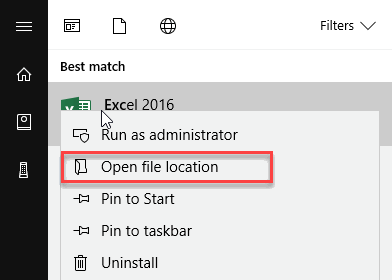
Open file location from start menu - Right-click the program and go to Properties –> Shortcut.
- Go to Advanced.
- Check Run as Administrator checkbox.
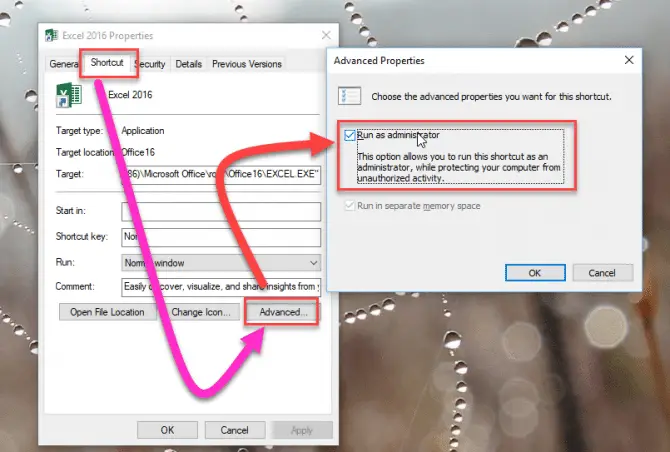
Run as administrator option for program
Now when you run the program from Start Menu, it will run in administrative mode.
Keyboard shortcut to run a program in administrative mode
You can also run a program in administrator mode directly from Start Menu. Just find the program in Start Menu, press Ctrl + Shift keyboard keys and click on the program. This will open the program as an administrator. But you will always need to press Ctrl + Shift keys while opening the programs in admin mode.
Always run all programs as administrator
By not running programs as an administrator, Windows keeps the system secure by not allowing viruses and malware take admin access without user acknowledgement. But if you want to turn off this feature and always run all programs as administrator, please follow the steps below. This security feature is called User Access Control. Disabling UAC will also disable asking for administrative privileges.
- Go to Start Menu search and search for "uac". Select "Change User Account Control Settings".
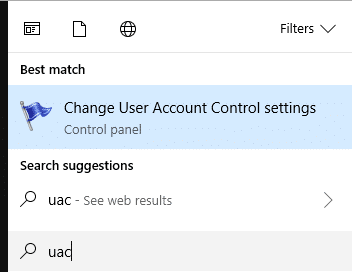
Finding UAC from Start Menu search - Move the slider to the bottom to turn off User Account Control.

Turning off UAC - After applying this, you will not be asked anything and all programs will run in administrative mode.
Use the Run dialog box to run applications with administrative privileges
There are some system programs which we start directly from Run dialog. For example, I always open command prompt or PowerShell using Run –> cmd.
If you are using Windows 10 Version 1803, the good news is that you will be able to open the programs in administrative mode directly from the Run dialog.
Just enter the command and press Ctrl + Shift + Enter. This will trigger Run dialog box to run applications with admin privileges.
Run programs as administrator using RunAs Tool
Windows built-in RunAs command allows a user to launch programs with different user credentials than the now logged in user. To use RunAs command, press Shift key and right-click on the program shortcut to show Run As Different User in the context menu.
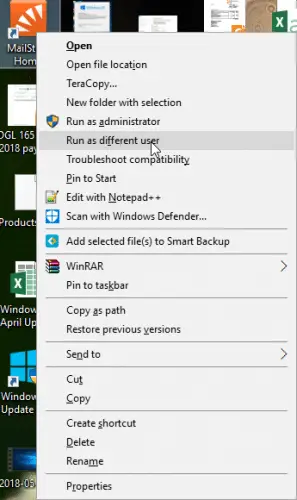
But you have to repeat this step every time you launch that specific program. If you want to always run a program as a specific user then RunAsTool is for you.
RunAsTool is a portable app in which you can save admin user credentials and then app can automatically run programs listed in the app as the specific user all the time.
This is especially useful for system administrators who want to give administrative rights to standard users only for specific programs and applications.
- Download RunAsTool
- Unzip it in a folder
- Run RunAsTool.exe or RunAsToolx64.exe depending upon your system architecture.
- First time, it will ask you for administrator user credentials
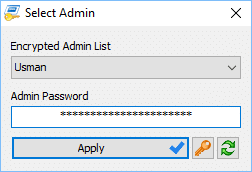
Select Admin in RunAsTool - After giving the administrator password, you can drag and drop the applications you want to run as administrator.
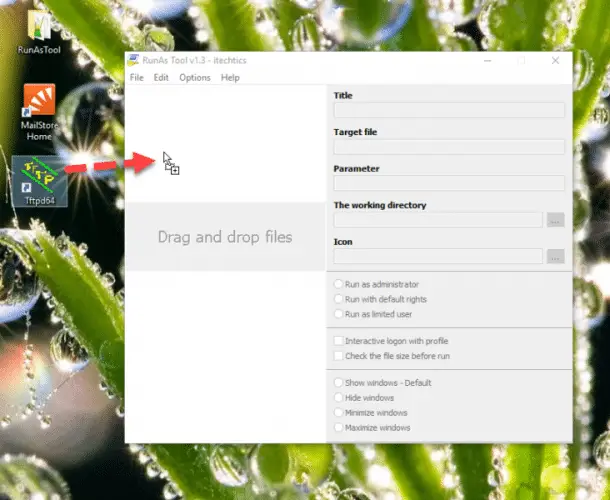
Adding programs to RunAsTool - Now you can double-click any application from within RunAsTool to run directly in administrative mode without asking for administrator password.
RunAsTool is a portable app so you can easily keep it in a pen drive and run it on any computer within a Windows Active Directory Domain. It's a life saver if you want to give network users administrator access to specific programs instead of giving them local admin privileges.
Conclusion
All the methods given above can be used for different purposes. As a power user or a system administrator, you must be aware of all these methods and can use them according to your situation. For a quick application, I use the keyboard shortcut + mouse click method. For domain users, I keep a copy of RunAsTool on a network drive and distribute it to users who want administrative access to specific programs.
Also see:
How to Run a File as an Administrator
Source: https://www.itechtics.com/run-programs-administrator/
0 Response to "How to Run a File as an Administrator"
Post a Comment